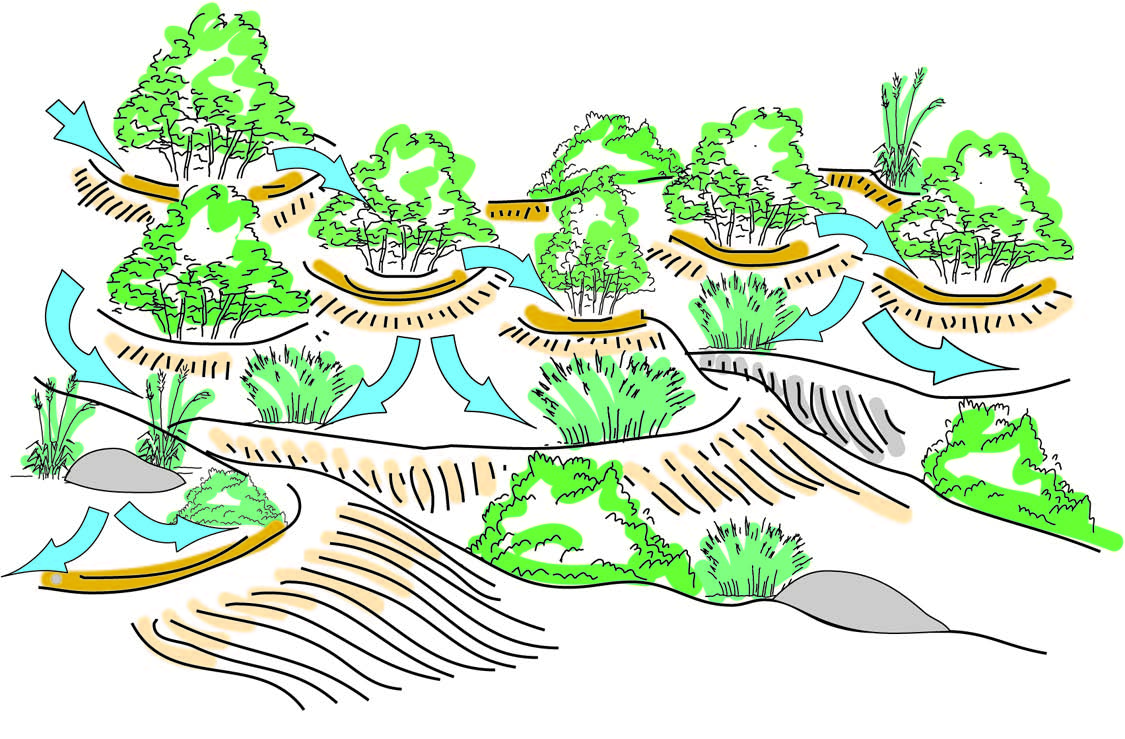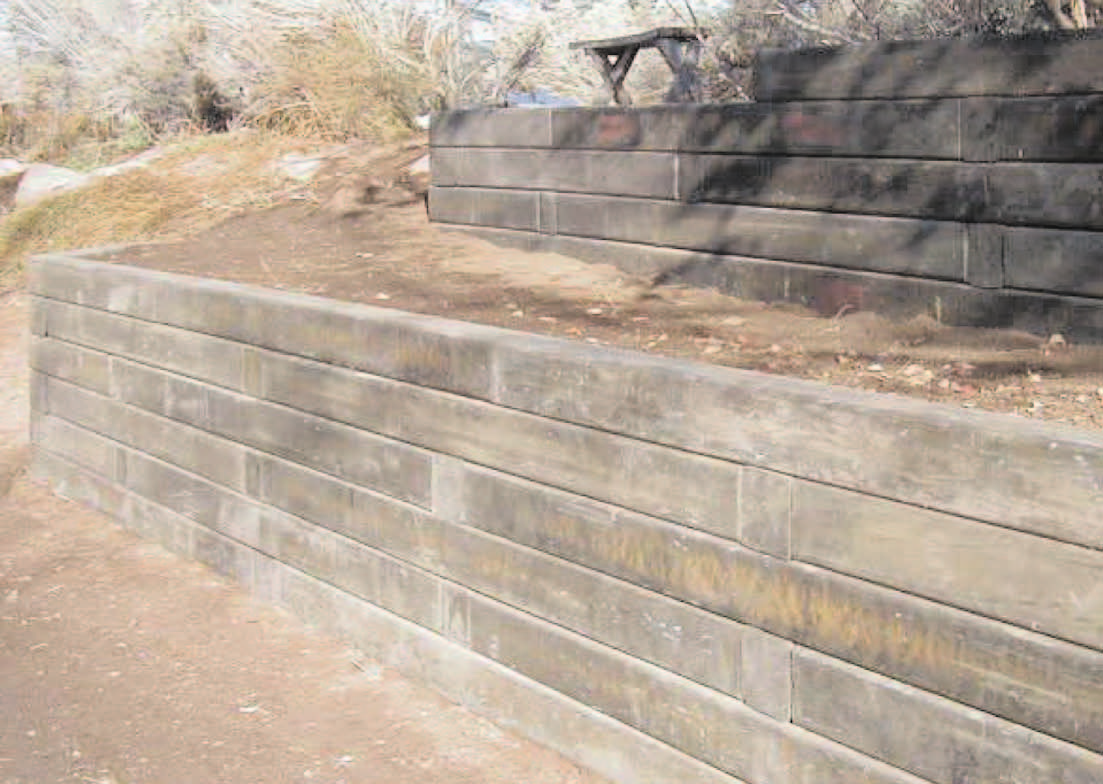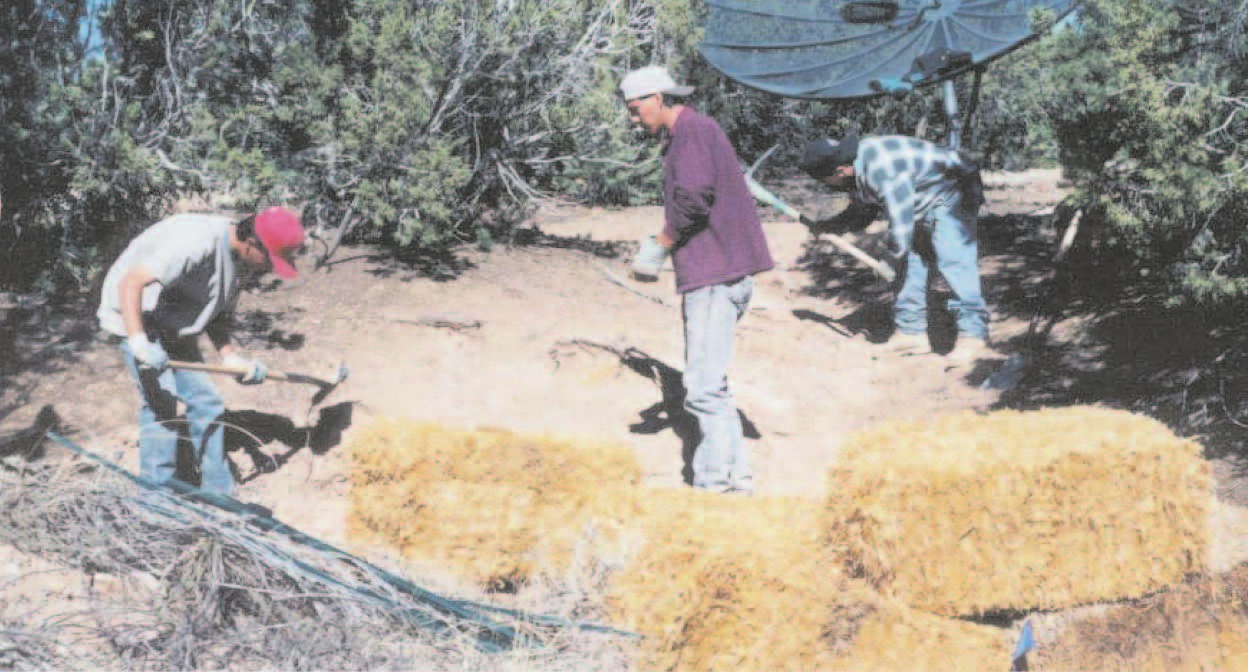The PermaDesign Weblog, with Nate Downey and Melissa McDonald!
Roof-Reliant Landscaping™ Step 6: Control Erosion

If you go through the steps of creating a roofreliant landscape using the seven basic xeriscaping principles highlighted above, it is important to take the necessary precautions to prevent your precious soil from eroding away during heavy storm events. Grade your garden in such a way that moisture can percolate into the soil, preventing the soil from migrating downhill.
Unless your property is completely level (and very few properties maintain a consistent elevation from one end to the other), you will want to grade your planting areas so the velocity of the storm water that flows during a high storm event is significantly reduced. One way to do this is to form “plant pockets,” as opposed to “tree wells,” around your plants. As shown in Figure 1-2, tree wells are completely circular, while the plant pockets, or “mini-swales,” are designed to accept storm water.

Figure 1-2
The small berm making up the pocket is placed on the downhill side of the plant or tree such that no part of the berm blocks nearby storm water runoff. Conventional tree wells divert this runoff away from plants while simultaneously increasing the velocity and mass of the storm water, which can quickly create serious erosion problems. Properly placed plant pockets slow the water down, minimize erosion and allow time for infiltration to take place at the plant's root zone.
Ideally, plant pockets should be situated in a fishscale pattern (depicted in Figure 1-2 below) so that none of the soil near your plants erodes during large storm events. Consider using the spoils from your native soil excavation for building your plant pockets. Just be sure not to allow moisture to back up against any structures.
If your property is steep enough and your finances allow, you can also build retaining walls to hold back some of the soil that you excavated to make room for compost and mulch. The resulting terraces will control erosion and serve as more highly engineered planting pockets. If terraces do not fit within your budget but your erosion potential is significant, on-contour earthen swales and straw bale swales can be used in some cases.

An on-contour earthen swale is a ditch dug along points on a slope that are all at the same elevation above sea level. Points on the same contour line can be determined by using one of a number of simple devices, including laser levels, tripod levels, water levels or A-frame levels. The dirt from your ditch is then placed on the downhill side of the ditch in the form of an on-contour berm. On either end of their berms, swales turn upslope in order to control the runoff that causes erosion.
In the event that your site is too steep for earthen swales, you can install straw bales and other permeable barriers that can reduce soil erosion on a slope. As you establish plant material next to these barriers, the root systems of your plants strengthen the soil in the vicinity of the barriers. Over time, all of these barriers disappear, leaving healthy plants and soil behind.

09/14/2015 | (0) Comments










Comments